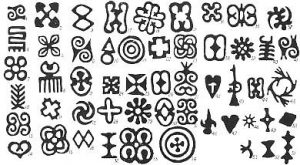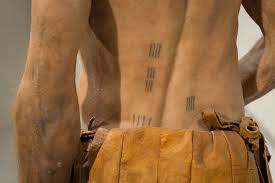The History Of Tattooing — Tattoos, Tools And People Through Millennia
Step into a tattoo studio today and you will hear the constant buzzing of machines, powered either by air pressure or an electric motor, as they penetrate the skin at a rate of anywhere between 50 to 3,000 times per minute. For some people, this sound invokes mild (at best) trepidation, for others, excited anticipation. You will see people from all walks of life getting their skin adorned with a myriad of styles and techniques: Old School, Blackwork, Neo-traditional, Watercolor, Black and Grey, and more. You can find a tattoo studio in almost any city in the world.

Tattooing has been practiced since ancient times, but it has evolved in various stages since then. In the past few decades, it has reclaimed itself from a time when it was used to demarcate fugitives or criminals, to grow into a thriving scene of artistic and individual expression. None of this would have been possible without those who came before, defining the Industry.
Tattooed mummies have been discovered all over the world. From Greenland to Siberia, Mongolia, China, the Philippines and the Andes. The world’s oldest preserved tattoos are believed to belong to Ötzi the Iceman, a mummy in particularly good shape found in 1991 in the ice in the Ötztal Alps (hence the name Ötzi). He lived around 5,300 years ago and had no less than 61 etchings on his body. These were clusters of horizontal or vertical lines that would most likely have been applied to the body by puncturing the skin and rubbing it with charcoal. The markings were placed around the lower back and the joints, places where scientists also found Ötzi to have suffered from physical degeneration. It is possible that the Iceman’s tattoos served either a therapeutic or a diagnostic purpose. The oldest preserved figurative tattoos were discovered in early 2018. They belong to a couple of 5,000-year old mummies from ancient Egypt. The man had a picture of a bull and a Barbary sheep, slightly intertwined, on his upper arm, and the woman S-shaped motives on her upper arm and shoulder. This discovery pushed the dating of the practice in Egypt back about 1,000 years.

The Fascinating Evolution of Tattooing
As we trace back through history, it’s evident that tattooing was more than just a mark on the skin. It was a language, a symbolism, and a sign of identity or status in many ancient cultures.
Cultural Significance of Tattoos
In the Pacific islands, tattoos were a rite of passage. The Maori people of New Zealand, known for their intricate facial tattoos called “moko,” believed that the tattoos protected them in battle and showed their rank within the tribe. Each moko was unique, telling the story of the individual’s ancestry, achievements, and social status. Similarly, in Polynesia, tattoos called “tatau” were considered a sign of beauty, maturity, and rank. Samoan men and women underwent painful sessions, using traditional tools made of bone and tortoiseshell, to get their entire bodies tattooed in geometric patterns.
In Japan, tattoos, or “irezumi,” have a more nuanced history. They were originally worn by indigenous Ainu women as decorative marks but later became associated with the Yakuza, the Japanese organized crime syndicate. However, over time, as the art of tattooing in Japan evolved, it began to encompass intricate designs like koi fish, dragons, and flowers, reflecting stories from folklore and mythology.
Tools and Techniques
While the buzzing tattoo machines of today offer precision, ancient tattooing methods were both rudimentary and ingenious. The Maori used bone chisels to carve designs into the skin, and then ink was applied. The pain was said to be excruciating but was endured as a test of bravery. In ancient Thailand, monks used long bamboo sticks with a needle point to tap tattoos, believed to imbue protective powers, onto pilgrims.
The indigenous people of North America used sharp bone or stone fragments to puncture the skin and then filled these openings with soot or natural dyes. In some tribes, tattoos signified warrior status, while in others, they were spiritual symbols or markers of clan lineage.
Changing Perceptions and Rediscovery
Over the millennia, the perception of tattoos underwent a shift, especially in Western societies. In the early centuries, they were seen with awe and intrigue, thanks to their association with far-off tribes and ancient rituals. However, by the 19th and early 20th centuries, tattoos in the West were mostly associated with sailors, prisoners, and societal outcasts.
The late 20th century saw a resurgence in the popularity of tattoos, spearheaded by musicians, artists, and countercultural movements. The emergence of tattoo conventions and the increasing number of skilled artists helped change the societal views on tattoos. What was once viewed as a sign of rebellion became a celebrated form of self-expression.
Conclusion
The art of tattooing is a window into our shared human history. It shows our innate desire to communicate, to beautify, to stand out, and to belong. As we marvel at the intricate designs in today’s tattoo studios, it’s awe-inspiring to think of the long journey this art form has taken, from Ötzi the Iceman to modern-day ink enthusiasts. Each tattoo carries a story, whether of personal meaning, cultural significance, or simply artistic appreciation. Just like the people who wear them, tattoos are ever-evolving symbols of humanity’s rich tapestry.
To be continued …
